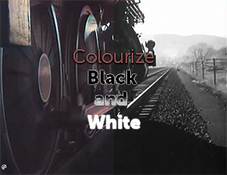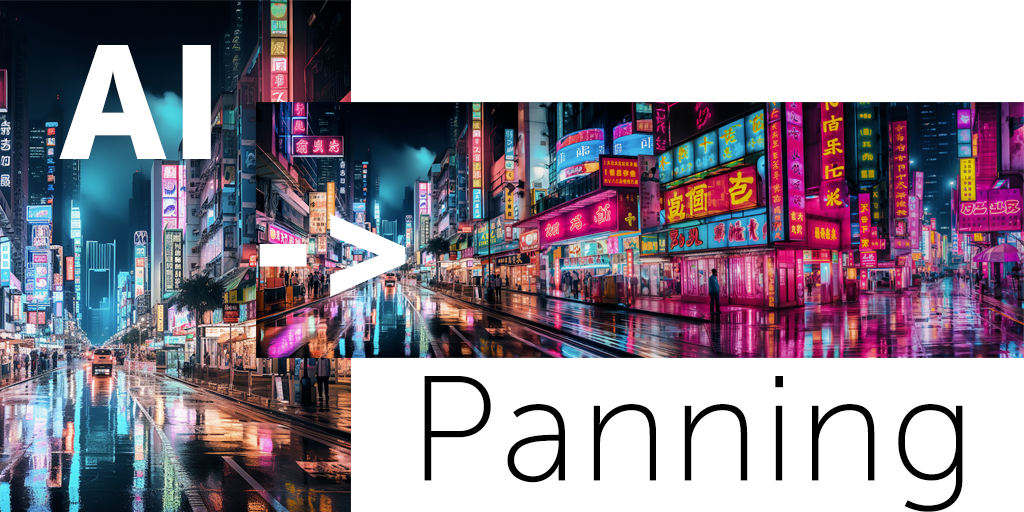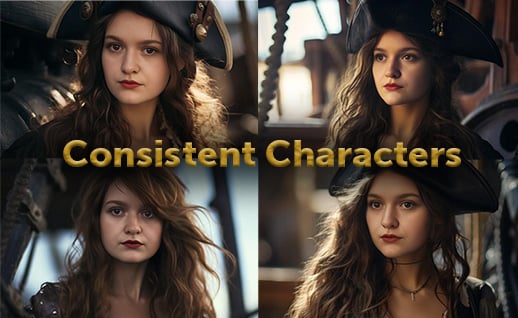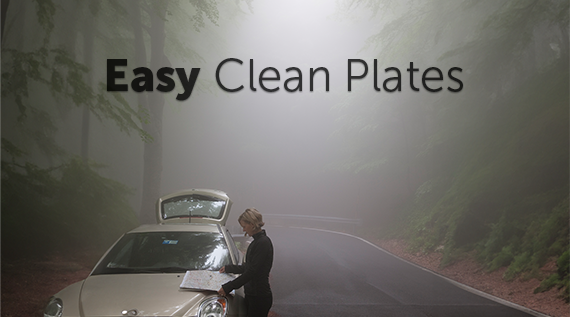If you have a project full of moody shots and pouring rain ahead of you, but the weather is bright and sunny? Don’t lose hope just now, there are a lot of options of how to make it rain from the comfort of your home (assuming you have the footage or you buy it – Dissolve.com 😉 ).
Follow along with the video tutorial here.
Base
The easiest way of adding pouring rain to your project is through the built in function of Adobe After Effects which is conveniently called CC Rainfall. You have the liberty of tweaking the amount of drops, their size, the scene depth and even the speed and angle (strength) of the wind. After a little playing around you can get a decent looking rain, which might just fit your scene. But what if you just can’t nail it and there’s still rain sticking out of your crisp footage like a sore thumb? The next step will help you solve this situation.
Advanced
The second option is to scour the internet for some rain overlays which might be generated better or simply shot in similar conditions. Luckily for you, our Goodies Page provides free (rare, I know right?) weather overlays of rain is various conditions. Did you try all of them and still none of them fits your footage? Do you want something so custom that not even a second page of Google has it? Well, then just jump to that last (hefty) step and make your own rain.
Pro
If you have just finished searching the web for the perfect rain for your project, and you would like to save some money and invest time in it, you can make your project mind-blowing by following the next steps.
To make this journey truly accessible we’ll be using Blender as our 3D software. You can use any other 3D software of your choosing, as the process will be very similar. Blender is not an easy program to learn, but it is free. Anyone would be able to download the newest version from blender.org (and donate to the good developers behind it, if you’re a good lad).
Install Blender onto your machine of choice and launch it. Pressing Shift+A will trigger ‘Add’ menu and under a ‘Mesh’ Tab select ‘Sphere’, which would instantly add a sphere to your scene. At the bottom left corner, you’ll have a small window to adjust it’s amount segments (top to bottom lines), rings (horizontal lines) and it’s radius. You can set it to around 12 segments and 8 rings. The radius can go down to a size of a droplet of water – which would be around 2mm (0.002m). Zoom in to your tiny sphere/droplet and select it by clicking on it. Click “Tab” to enter the edit mode. The whole object will light up in orange color and you’ll see it’s individual vertices. Click “Alt+A” to deselect everything and select only the very top vertex. Then, up in the center of the screen, you’ll find a small menu where the first option from the right is the ‘Proportional Editing’ tool. Just click on the pop-down menu on the right side of the screen and select “Sharp” after that toggle the button next to the selection. It’ll let you know that the tool is on by lighting up a blue color. Once you have that, return your attention to the selected vertex on your droplet. Next, is shaping the sphere into a real droplet. Press “G” (as grab) and scroll the wheel way down to adjust the size of the proportional editing area to almost 0 (or until you see it doesn’t affect the whole sphere). Press “Z” so your vertex moves on the z-axis of the scene. Move your cursor up until you are content with the shape of the droplet you have there.
Once you’re done with the basic modelling, we can give it some texture. In the right side panel, you have your context menu from which you can choose the option that looks like a sphere with checker on it (red, second from the bottom in Blender 2.8). What you’ll see is almost an empty tab with just one button that says “New”, which you can click. The button changes to the name of the new material you’ve just created for your droplet. You can rename it to ‘water’ or anything else that comes to mind. Then, go down to the ‘Surface’ options and instead of ‘Principled BSDF’ choose ‘Glass BSDF’. Leave the color to white, change roughness to 0 and IOR (index of refraction) to 1.333 (IOR of water). And that’s it for the materials!
What we need to do next is an actual particle system and create the scene in order to achieve the rain effect. Let’s drop in a plane by pressing “Shift+A” in the main scene window and selecting “Mesh – Plane”. This is going to be our “cloud”, so we will need to scale it up. For that hit “S” on your keyboard and write “10”. This will set the size of the plane to 10x bigger. With the plane selected, just go again to the right side panel and choose “Particle” tab (blue, dot with other two dots connected). In this empty tab, you have just one option, which is to press the plus in the right corner to create new particle system. Once you do that, there’ll be plenty of things to go through. First we have an “Emission” tab where you choose number of the particles – something around 10, 000 will do. Choose the length of the simulation – set “End” frame to your desired length (10s of video are 240 frames with 24 frames per second). After that, go to “Render” tab, and switch “Halo” for “Object”, in the sub-tab that pops down underneath choose “Sphere” for the “Instance Object”. Select the object “Scale” to 1 and “Scale Randomness” also to 1. Toggle of the “Show Emitter” option so your plane doesn’t appear in your final render. Then, go to your scene and move the plain (using G and Z) up into a height of 10 to 20 metres. Now you will have to save the file (unless you have done it already). After saving the file, you’ll be able to go into the “Cache” tab in the Particle system settings and choose “Bake”. Program will just count the dynamics of the particles.
Now, we have our rain showing in the viewport and it’s time to tweak it to your footage. Thankfully, you have a lot of powerful tools to do so. You can tweak the particle system itself by symply raising the number of the particles, playing around with its size, velocity, etc. You can also add effects to the scene such as ‘Force Fields’ (Shift+A – Force Field) that will affect the particles. The most logical one would be “Wind”, but you can go with “Turbulence” for more drizzy effect or “Vortex” for straight up tornado effect. After adding one or more of these forces to your scene, orient them in the right direction (using R for rotation, G for grab to move) you can tweak their settings in the “Physics” context menu tab (blue, circle with C shaped line around it). First, set it’s strength to something around 5, so you can see its effect on the scene. Then, select your plane, go to “Particle” settings, under Cache tab and click “Delete Bake” and “Bake” again (if you don’t want to do this every time and if you have a strong enough machine, just press play on the timeline and it’ll calculate the particles). Now you’ll see the effect of the force. You can play with force setting some more to adjust the power variety of the force, or it’s flow.
After these steps, it’s time to align your camera to the desired angle, matching your footage. You can do that by using R for rotation, G for move or by the tools on the left side. You’ll be able to get all kinds of crazy camera angles from this. More than that, you can set your camera to match the real one. Just go to the camera tab in the right context menu and there you can choose any focal length under ‘Lens’ and any sensor size under the “Camera” tab.
Once you have done that, we will move to one Jedi trick that will make this all work. The magic word behind is HDRI image. It’s basically a 360 degree image that we will set up in scene. You can use one from your scene if you have that option, or you can go to https://hdrihaven.com/ which is a free source with an amazing community, where you can get high quality HDRI images. Download the one that fits your footage the most (dark/cloudy/trees/desert, etc) and go back to Blender. Go to the “World” tab in the right context menu and in the “Color” option you’ll see the circle button. Click on it and choose “Environment Texture”, underneath will show more options. Click to “Open” and choose your HDRI file on your computer. Once you have that, you can go to viewport and in the upper right corner switch from “Solid” view to “Rendered” to see if the image has loaded right.
If everything works, it’s time to render it out! If you have any troubles, don’t hesitate to google out your issue and ask the Blender community, there are some really helpful kind people out there.
For rendering we will need to set up a few things. Go to the “Render” tab in the right context menu and choose “Cycles”, the render engine that is the most realistic option out of the three. However, it takes the most amount of power to render. Under “Sampling” adjust “Render” samples to somewhere around 200 (the higher, the better). The, go down and toggle on “Motion blur”. Under that tab, you can set up how the motion blur will look like. The last step is to go to the “Film” tab and toggle on “Transparent” so we have our final render with alpha channel. Now, let’s head to “Output” panel (one under the “Render” panel) and setup the output dimensions. It’s automatically 1920×1080 and you can put any value you want. Find the right framerate in the “Frame Rate” menu. Here’s an extra tip – If you want your rain in slow motion or to just slow it down, you can you “Time Remapping” and set the “New” to 200 for 2x slower, 400 for 4x etc. Next, go to “Output” and click on the folder to find the right place for your render files. Leave it on *png, because if something goes wrong you can always start where it ended rendering.
Make yourself a coffee and wait until the render is done. Once you have your bunch of pngs you can go ahead and throw them over your footage as a timelapse. Make sure you match the frame rate from the file and enjoy the look at your masterpiece.
Once you’re happy with the hard work you’ve done, pat yourself on the shoulder and tell yourself something nice. You now have a finished product with rain overlays that will impress anyone that sees your project! You no longer will have to wait for tangible rain, when you can add rain overlays.
Posted by
Nikoleta





.png)
.png)
.png)




